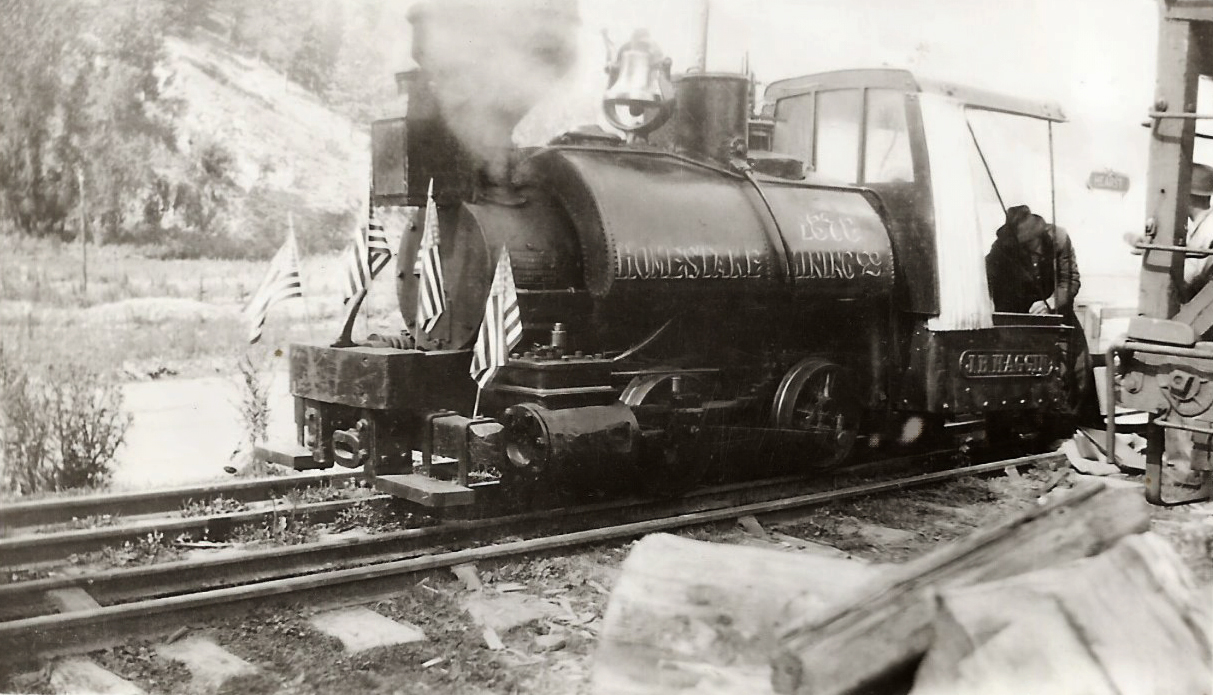Throughout 2025, we’ll showcase the Homestake Mining Company, a cornerstone of our local heritage. This month’s featured photo is the J.B. Haggin train engine, the heaviest artifact in the Adams Museum. It weighs 5 tons, with a 22” wheel gauge, and bears the builder’s serial number 4669.
It was built by the Baldwin Locomotive Works in Philadelphia in 1879 for the Homestake Mining Company in Lead, South Dakota. It was the first steam-powered, wood-burning locomotive in the Black Hills. The engine was transported from Philadelphia to Lead by freight wagon on the Bismarck to Deadwood trail. It would have taken between 16 and 17 days to complete the trip.
When the J.B. Haggin arrived at the mine, it was immediately put to work hauling timber and mining supplies into the mine and ore out of the mine to the mills for refining. This little engine could pull 15 cars or 30 tons of ore on each trip, averaging 600 tons per day. It was in use from sunup to sundown, day after day.
It is named after James Ben Ali Haggin, who was one of the three original investors in the Homestake Gold Mine. Haggin, who lived in San Francisco, was an extremely wealthy lawyer and venture capitalist. At the time of his death in 1919, his wealth was valued at $50 million. The other two original investors were mining mogul George Hearst and Lloyd Tevis, who was the president of Wells Fargo.
In 1901, Homestake began using compressed air, rather than steam, to power its locomotives. Five years later, the J.B. Haggin was retired from service. In 1932, the engine found a new, forever home at the Adams Museum.
We all want to strike it rich, just like the mining employees did. So come on in, and let’s make 2025 a year of prosperity and fun. Stay tuned for more stories and events as we celebrate the legacy of the Homestake Mining Company this year – a symbol of hard work, determination, and innovation that shaped Deadwood and the Black Hills region.

